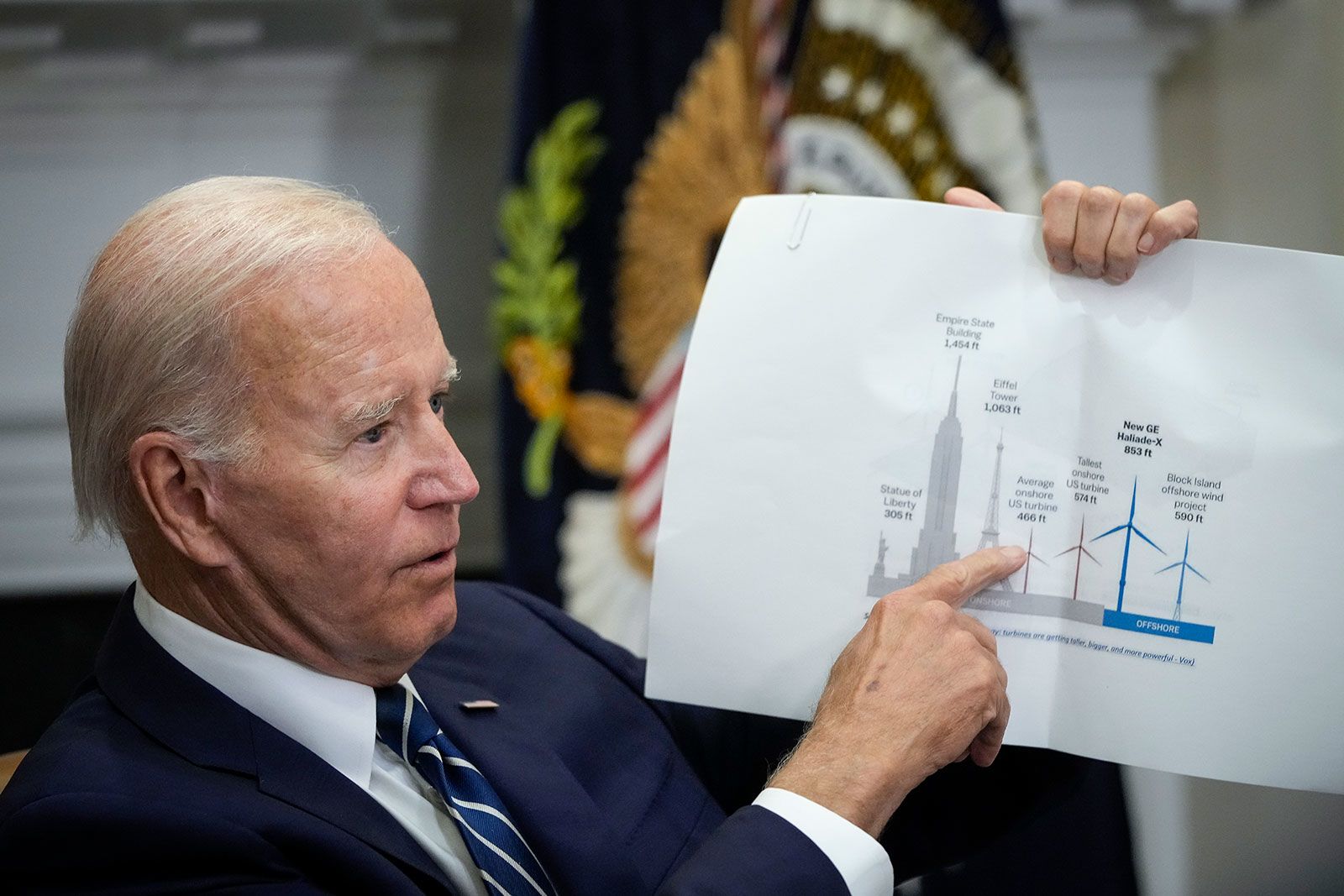
Accelerating Innovation to Foster Clean Energy Solutions
The U.S. Department of Energy's Office of Fossil Energy and Carbon Management (FECM) has introduced an exciting initiative, allocating up to $100 million to drive the advancement of a commercially feasible carbon dioxide removal sector in the United States. This funding is intended to bolster pilot projects and testing facilities, facilitating the exhibition and expansion of cutting-edge carbon dioxide removal technologies. With a commitment to curbing CO2 pollution and realizing President Biden's far-reaching climate and clean energy objectives, this endeavor presents substantial potential for both environmental sustainability and economic prosperity.

>> RELATED: DOE Announces Up to $100 Million for Pilot-Scale Testing of Advanced Carbon Dioxide Removal Technologies
Exploring the DOE's $100M Initiative
The DOE's investment in carbon dioxide removal technologies is a crucial part of its broader Energy Earthshots Initiative, especially the Carbon Negative Shot introduced in 2021. This focused endeavor aims to decrease the expense of removing CO2 from the atmosphere to below $100 per net metric ton of CO2-equivalent by 2032, indicating a determined effort towards achieving net-zero emissions and secure storage solutions.
Three Key Objectives for CO2 Removal
The funding opportunity announcement (FOA) aims to further Carbon Negative Shot goals through integrated pilot-scale testing of innovative carbon dioxide removal methods. It focuses on three main areas:
- small-scale biomass carbon removal and storage pilots,
- small mineralization pilots, and
- multi-pathways carbon dioxide removal testbed facilities.
Each initiative is designed to cater to diverse ecosystems, climates, and community requirements while maintaining strong monitoring, reporting, and verification procedures.
Community Engagement and Equity
A key focus of the DOE's initiative is to actively involve communities and consider societal impacts. Applicants for funding must show how their projects will bring economic and environmental benefits, promote diversity, equity, inclusion, and accessibility, and prioritize workforce development and quality job creation. By emphasizing strong community and worker benefits, these projects aim to secure widespread support and long-term sustainability.
/bnn/media/media_files/6fe3e9efdd5c33b11654173793766fb1cb28bf3a236376ea3b80051600e0ea46.jpg)
Driving Technological Innovation
The DOE's funding for pilot-scale testing creates an opportunity to boost technological innovation and speed up the implementation of carbon dioxide removal solutions. By offering resources and backing for testing facilities and pilot projects, the DOE enables researchers, entrepreneurs, and industry leaders to develop new methods and improve existing technologies. From investigating biomass carbon removal to enhancing mineralization techniques, these projects expand the limits of what's achievable in carbon dioxide removal, nurturing a culture of innovation and exploration.
Unlocking Economic Opportunities
Beyond the environmental advantages, establishing a commercially feasible carbon dioxide removal sector has substantial economic potential. The DOE's $100 million investment can stimulate job creation, drive innovation, and foster economic growth nationwide. The carbon dioxide removal industry provides opportunities for skilled workers, entrepreneurs, and businesses to prosper in a swiftly changing clean energy environment, from research and development to manufacturing and deployment.
Ensuring Environmental Stewardship
As we work towards ambitious climate goals and shift to a low-carbon economy, it's crucial to prioritize environmental stewardship and sustainability. The projects supported by DOE's funding will be closely monitored, reported, and verified to ensure they fulfill their commitment to carbon dioxide removal while minimizing environmental impacts. By integrating best practices and embracing sustainability principles, these initiatives show a dedication to responsible resource management and ecological integrity.

Collaboration and Knowledge Sharing
The DOE's investment in carbon dioxide removal technologies encourages collaboration and knowledge sharing among industry sectors, research institutions, and government agencies. Through partnerships and information exchange, stakeholders can utilize collective expertise and resources to speed up progress towards common goals. By promoting collaboration and breaking down barriers, the DOE establishes an environment where innovation flourishes, and advancements are shared for the benefit of all.
Looking Ahead
The DOE's $100 million investment in testing advanced carbon dioxide removal technologies is a crucial move in addressing climate change and transitioning to a sustainable, low-carbon future. With an emphasis on innovation, collaboration, and community engagement, this initiative has the potential to make significant progress towards achieving net-zero emissions and creating a cleaner, more prosperous world for future generations.
>> In Other News: Novelis Signs 100% Renewable Energy Contract for Its German Rolling and Recycling Plants
Subscribe to the newsletter
Daily decarbonization data and news delivered to your inbox
Follow the money flow of climate, technology, and energy investments to uncover new opportunities and jobs.
Latest issues
-
Who’s Driving $110B Into Hydrogen Now?
Inside This Issue 🌍 Global Hydrogen Industry Surpasses USD 110 Billion In Committed Investment As 500+ Projects Worldwide Reach Maturity ♻️ Cielo Advances Waste-to-Fuel Innovation with Project Nex...
-
ExxonMobil + CF Capture 2M Tons in America’s Largest CCS Launch
Inside This Issue 🏭 CF Industries Flips Switch on Massive CCS Hub That Changes Everything 🧴 Scientists Transform Plastic Waste Into Efficient CO2 Capture Materials ⚡ SHS Group and Verso Energy Sig...
-
2 Million Tons of CO₂ — But How?
Inside This Issue 🏭 CF Industries Announces Start-up of Donaldsonville Complex CO2 Dehydration and Compression Unit, Permanent CO2 Sequestration 📉 EIA: US Biodiesel And Renewable Diesel Imports Fa...
Company Announcements
-
ABS Issues AIP for Blue Ammonia Concept From SBM Offshore
The latest offshore production facility from SBM Offshore has earned approval in principle (AIP) from ABS. SBM’s floating offshore ammonia production and storage design opens new ways to valorize ...
-
Peregrine Hydrogen Signs LOI With OCP Group for Scale-Up Funding and Offtake
MOUNTAIN VIEW, Calif.--Peregrine Hydrogen today announced it has signed a Letter of Intent (LOI) with OCP Group, the world leader in plant nutrition solutions and phosphate-based fertilizers, to se...
-
MILAN and BRUSSELS, Sept. 9, 2025 /PRNewswire/ — The clean hydrogen sector has reached a major milestone, with USD 110 billion in investment now committed across more than 500 projects worldwide th...
-
Vitry-le-François, France / Luxembourg (September 10, 2025, 8:00 am CEST) – Haffner Energy, a leading solid biomass-to-clean fuels solutions provider, and Luxaviation Group, a leading global opera...